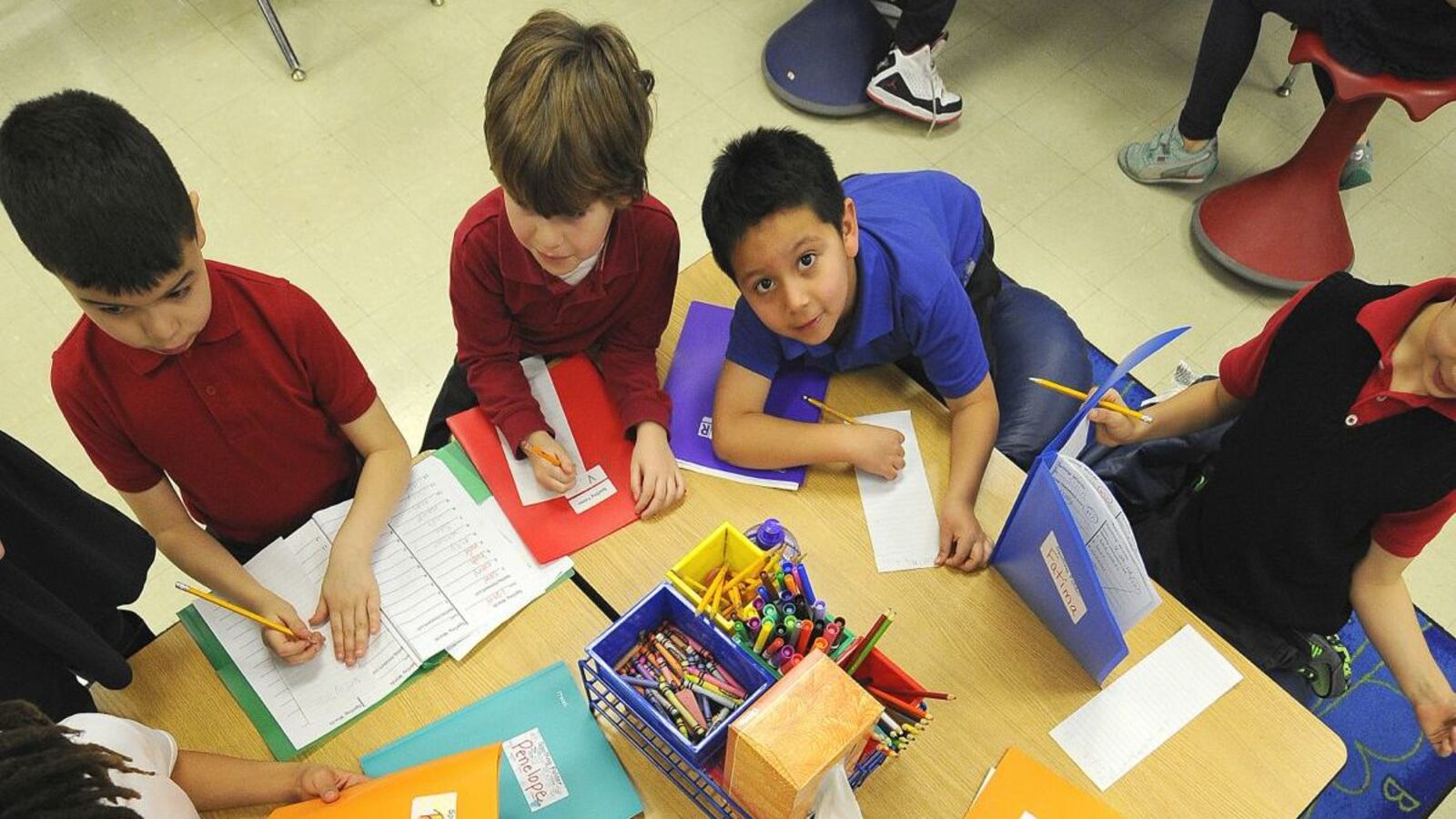Indiana has been at the center of things in education lately.
Policymakers often point to the state as a model of how school choice can work across the country. U.S. Education Secretary Betsy Devos has mentioned Indiana many times since her appointment to highlight examples of how Indiana’s version of school choice is helping her shape her current education agenda.
But is Indiana’s system working? Who benefits, and who gets left out? What are the stories behind the legislative battles and inside the classroom doors — especially those that open to reveal students who historically have lacked access to good schools?
Those questions lie at the heart of Chalkbeat’s mission: to cover the effort to improve schools for all children, not just the privileged few.
Indianapolis is also a laboratory for some of the most influential ideas in education reform right now — especially the shift of power toward schools and away from districts. Powerful Indiana philanthropists are helping to lead that charge, and the rest of the country is paying close attention.
As Indiana is being held up by some as a national model of new strategies, our job is to add detail that can be seen only from up close.
We’d like to invite you on our journey by informing and supporting our journalism. Below you’ll hear from Chalkbeat Indiana reporters about the stories they’re focusing on this year, but as you read, know that we can’t tell them without you. So please — reach out! Introduce yourself, submit a story tip, give us feedback or propose a First Person essay by emailing us at in.tips@chalkbeat.org. (One of the best coffee shops in the city is half a block from our office, and we’re always game to meet readers there.)
All this work demands time and talent — neither of which are free. If every Indiana reader gave $10 right now, we could raise $260,000 to support our mission this year. That’d be enough for all these stories and more. We hope those who can will consider making a $10 tax-deductible donation here.

Dylan Peers McCoy: As Indianapolis experiments with school choice in many forms, I cover how it plays out for families and schools
Three months after I started covering Indianapolis, I heard about an unusual movement at a traditional public school.
On a Saturday morning in January 2016, hundreds of neighbors, teachers and families packed into the cafeteria of School 15. Also known as Thomas Gregg, the school had struggled for years on state tests. Indianapolis Public Schools was trying a new approach to turnaround — handing over management to charter operators. Community leaders feared that School 15 would be next.
If the school was going to be taken over, they wanted to be the ones in charge.
Almost two years later, their plan has come to fruition. This fall, Thomas Gregg became an innovation school. The same law that allowed the district to partner with charter schools to create innovation schools allowed them to give a community nonprofit oversight of the school.
The takeover of Thomas Gregg is just one of the stories that have captivated me as I have covered Indianapolis Public Schools’ effort to create a new system, where principals have more power over their schools, fewer teachers are unionized and the line between traditional public and charter schools is evermore blurry.
It’s an intricate story, and it’s easy to get lost in the fine print. The contracts for each innovation school matter, as do the decisions that oust unions from schools and the agreements with nonprofits that foster the growing collaboration between Indianapolis Public Schools and the city’s vast array of charter schools. It’s my job to live in those weeds.
Yet that thicket of discrete decisions contributes to a broader transformation. My aim is to show not only how much each innovation agreement will cost in dollars and cents, but also how district, city and state decisions are creating a new vision for the city’s schools.
The essential questions facing Indianapolis are the same questions in many cities that are embracing school choice — how to make choice work for families and create a system that gives principals freedom without creating chaos.
This year, I also aim to focus my coverage on a subject that’s often left out of school choice debates, educating students with disabilities. In a district where nearly one in five students have disabilities, it’s vital to cover the challenges facing educators and to help inform parents looking for an effective and consistent education for their children.
If my coverage is a success, I hope to kick-start an honest conversation about what kind of district we would like to see in Indianapolis in the years ahead.
Help me find the stories and conversations that are shaping our city. You can reach me by email at dmccoy@chalkbeat.org, phone at (508) 259-4809 or tweet @dylanpmccoy.

Shaina Cavazos: In my coverage of the General Assembly and state education policy, I dissect complex legislation and navigate the politics and lives behind it.
Here at Chalkbeat Indiana, we thought Indiana education policy was cool long before Mike Pence joined the 2016 presidential ticket, launching the state into a rush of national notoriety.
In July 2014, when I got to Indianapolis, Common Core had recently been booted. A new test was on the horizon. Teachers were reeling. Political tensions still ran high in an administration that came to be known for its spats and drama.
For a young journalist, it was heady stuff — and I came to Indiana by way of Illinois and Missouri, two states where politics aren’t exactly calm.
So I read. And I reported. And I read some more, talked to teachers and went to a bunch of meetings. I spent my first year learning everything I could about Indiana and its complicated history with education.
How, over the past decade, Indiana has been at the forefront of many controversial education changes seen across the country — switching to new state standards and tests, creating robust charter and voucher programs, and leading the way when it comes to school choice in general.
How, at this point, with a Republican, pro-school-choice supermajority in the state legislature and a Republican governor, the state seems primed to continue down its pro-school choice path, which could eventually take the shape of “education savings accounts” or expanded “course access” programs. Although, Republican state Superintendent Jennifer McCormick’s new administration could add an interesting twist, given how often she seems to deviate from the party line.
Three years later, I feel even more committed (if that’s even possible) to making sure Chalkbeat Indiana is meeting the needs of our local, city, and state communities.
Covering state policy challenges me to dissect complex legislation, navigate politics, and build close relationships with readers and sources. I want readers to understand how education is changing in Indiana and why. I want them to be armed with information so they can pick good schools and vote intelligently.
I want to be able to say, at the end of the year, that I held public officials accountable and that I did it in a way that was fair. I know I can’t do that without you. If state education policy and politics are topics that you are interested in, join me in my reporting by emailing tips, story ideas or questions to scavazos@chalkbeat.org. You can also follow me @ShainaRC.

